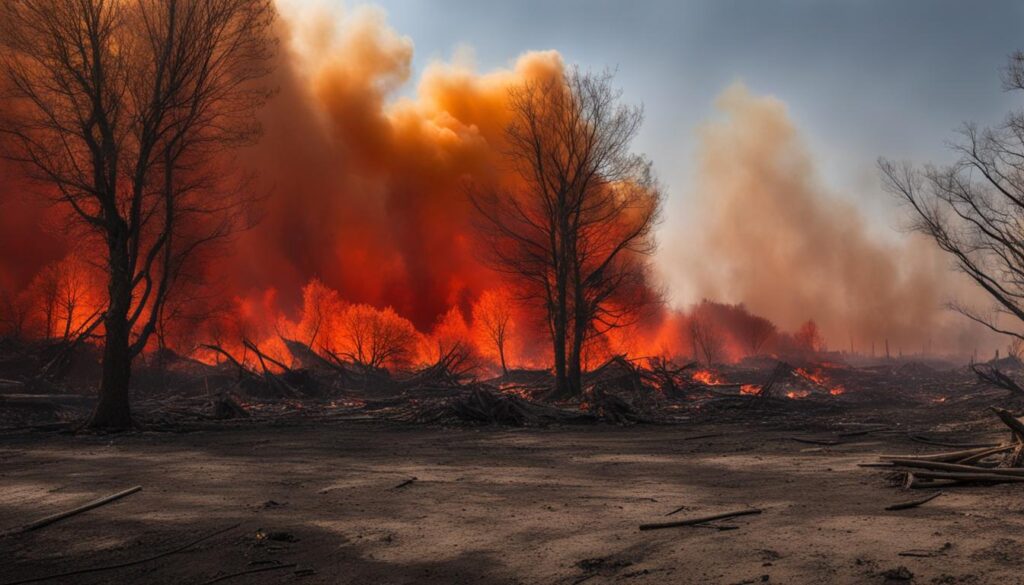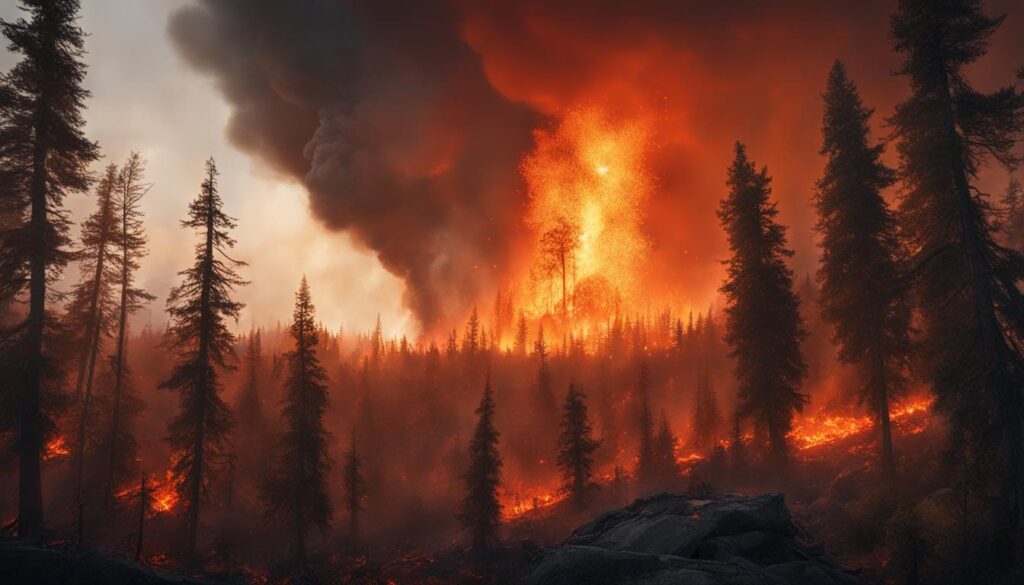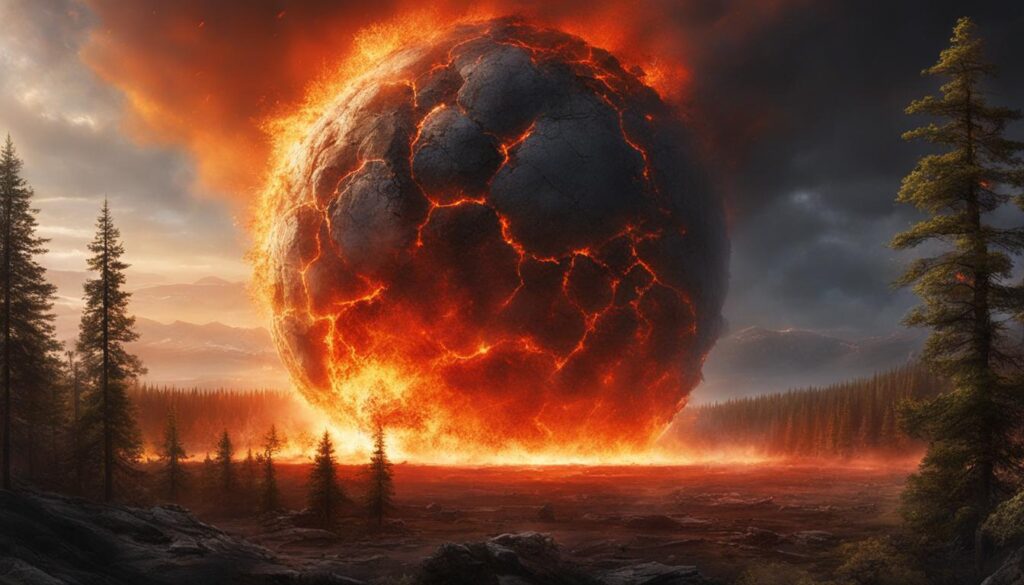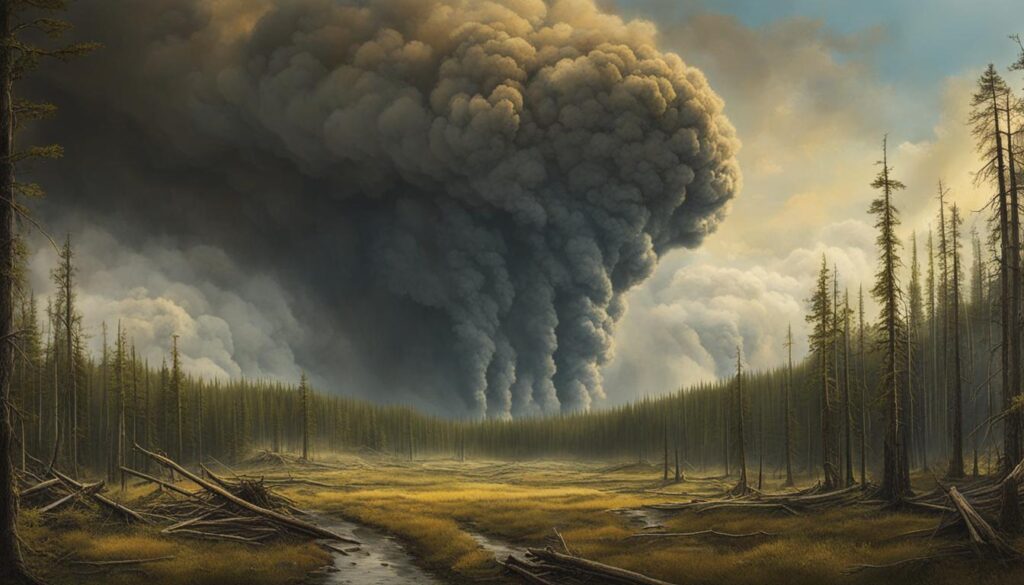The Tunguska Event remains one of the most enigmatic and spectacular events of the 20th century. On June 30, 1908, a massive explosion occurred in a remote area of Siberia, unleashing a powerful blast that flattened trees, leveled the ground, and registered seismic waves across the globe. The impact of the explosion is still being felt to this day, with scientists and researchers still trying to unravel the cause behind the blast.
With numerous theories and speculation surrounding the event, The Tunguska Event holds the key to unlocking many unsolved mysteries of our universe. In this article, we will delve into the details of one of the greatest catastrophes in human history, exploring its impact on scientific research, the different theories proposed to explain it, and the legacy that it leaves behind.
The Tunguska Event: What Happened on That Fateful Day?
On June 30, 1908, a massive explosion rocked the remote region of Siberia, known as Tunguska. Eyewitnesses reported a bright flash of light followed by a deafening roar. The explosion was so powerful that it flattened an estimated 80 million trees over an area of 830 square miles. The scale of the devastation was unprecedented and caused widespread confusion and panic.
For decades, scientists struggled to understand the cause behind the Tunguska explosion. Some proposed that it was a meteorite impact, while others suggested a volcanic eruption or even an alien spacecraft crash. The true cause behind the blast remained shrouded in mystery for years.

As more investigations were conducted, it became increasingly clear that the Tunguska event was caused by a massive explosion, likely from a meteorite or comet that entered the Earth’s atmosphere. The force of the explosion was estimated to be the equivalent of 10-15 megatons of TNT, which is more powerful than the most powerful nuclear bomb ever detonated.
The Tunguska explosion left an indelible mark on the scientific community, sparking interest in the study of extraterrestrial events and leading to new advancements in technology and research. Even today, more than a century after the explosion, scientists continue to study the Tunguska event to unravel the many mysteries surrounding this enigmatic event.
Unraveling the Mystery: Early Investigations and Theories
Scientists were quick to begin investigating Tunguska explosion after it occurred on June 30, 1908. However, it wasn’t until several decades later that detailed expeditions were carried out to examine the area. In the early investigations, researchers found no evidence of a crater, which puzzled them further. They did, however, discover flattened trees and extensive damage to the surrounding environment, indicating a significant impact.
Theories abounded as scientists sought to understand the cause behind the event. Early theories included volcanic eruptions, earthquakes, and even a collision between two planets. However, these theories failed to explain all the clues found at the site, leaving the scientific community baffled.
“The great Tunguska meteorite mystery has been with us for almost 20 years, yet it seems no nearer a solution than it was 10 years ago,” said Leonid Kulik, a leading Soviet scientist and the first to lead an expedition to the site in 1927.
It wasn’t until 1928 that a new theory emerged, suggesting that the blast was caused by a Tunguska meteorite. This theory gained traction among the scientific community, and further expeditions were launched to gather more evidence to support it. Despite its underlying popularity, however, this theory was still not universally accepted. Many scientists continued to propose new theories to explain the incident.

The Tunguska Alien Theory: Extraterrestrial Involvement?
While the Tunguska scientific theories have gained widespread acceptance in the scientific community, the Tunguska alien theory remains a controversial topic. Advocates of this theory suggest that The Tunguska Event was caused by extraterrestrial activity, which resulted in a massive explosion.
Proponents argue that the mysterious nature of the explosion, the lack of a physical impact crater, and the absence of a surviving meteorite fragment support their claims. They suggest that an alien craft or object entered Earth’s atmosphere, collided with the Tunguska forest, and exploded upon impact, causing the devastation that followed.
However, the Tunguska alien theory has faced significant skepticism from scientists. Critics argue that the theory lacks tangible evidence and is based solely on speculation and assumptions. They suggest that Tunguska was more likely caused by a natural event, such as a meteorite or comet, rather than extraterrestrial intervention.
“While the idea of an alien encounter is intriguing, we need to rely on scientific evidence to explain The Tunguska Event.”
Despite the skepticism surrounding the Tunguska alien theory, it continues to captivate the public imagination. The theory has been the subject of numerous books, documentaries, and films and remains a topic of endless speculation and debate.
While the search for answers continues, the Tunguska alien theory serves as a reminder of humanity’s insatiable curiosity and ongoing fascination with the unknown.
Scientific Explanations: The Meteorite Hypothesis and Beyond
After decades of research and numerous scientific theories, the meteorite hypothesis has emerged as the prevailing explanation for The Tunguska Event. According to this hypothesis, a meteorite entered the Earth’s atmosphere and exploded in mid-air, causing the devastating blast and subsequent destruction in the Tunguska region.
Despite the meteorite hypothesis being widely accepted, ongoing research continues to explore alternative theories and explanations. Some scientists argue that the explosion may have been caused by the ignition of a hydrogen cloud, while others mention the possibility of a black hole or a comet impact. However, none of these theories have gained as much support as the meteorite hypothesis.
The search for a concrete answer remains ongoing, with continued scientific advancements and discoveries fueling the quest to unravel the mystery of The Tunguska Event.

“The Tunguska Event remains a true enigma, and it highlights the importance of continued scientific exploration and investigation in understanding the world around us.”
The Impact: Repercussions and Scientific Advancements
The Tunguska Event had a profound impact on the scientific community and its pursuit of understanding natural phenomena. The explosion sparked renewed interest in the study of extraterrestrial events and served as a catalyst for future research.

Scientists around the world were driven to investigate the Tunguska Event, leading to several scientific theories that aimed to explain the mysterious explosion. The explosion prompted a shift in scientific thinking, with researchers prioritizing the study of cosmic bodies that could potentially impact the Earth.
The Tunguska impact was also felt beyond the scientific community. The event captured the public’s imagination and sparked a fascination with unsolved mysteries that endures to this day.
The call for answers to the mystery of the Tunguska Event has driven scientific advancements, with new technologies ushering in new findings about the cosmos and Earth’s place within it. These advancements, in turn, inspire continued pursuit of knowledge and understanding of the universe and our place in it.
Endless Speculation: The Legacy of The Tunguska Event
Perhaps the most intriguing aspect of The Tunguska Event is the continued fascination and speculation surrounding it. Despite over a century of research, the mystery remains unsolved, and the public’s imagination continues to be captivated by the explosion in Siberia.
The Tunguska mystery has spawned countless conspiracy theories, from alien involvement to secret government experiments. While many of these theories lack scientific merit, they serve as a testament to the enduring fascination with this enigmatic event.
The scientific community, with the help of advanced technologies, continues to investigate the Tunguska catastrophe. Their findings have given rise to various new Tunguska scientific theories and hypotheses.
“The Tunguska event has become a lasting legacy, a remarkable hiccup in an otherwise normal world” – David E. H. Jones
The Tunguska Event continues to ignite the imaginations of conspiracy theorists, researchers, and writers alike, serving as a cautionary tale of the consequences of unknown catastrophes. The world may never know the true cause behind this enigmatic explosion, but the legacy of The Tunguska Event will undoubtedly endure.
Conclusion
The Tunguska Event remains one of the greatest enigmas in scientific history and has captivated the imagination of researchers and the general public alike. Decades of investigations have led to numerous theories and speculations to explain the cause of the explosion.
While the mystery remains unsolved, the impact of The Tunguska Event has been far-reaching, spurring scientific advancements in the study of extraterrestrial events. As we continue our quest to unravel the truth behind this event, the significance of the Tunguska event in scientific research cannot be overstated.
As we look to the future, it is important to recognize the importance of continuing scientific exploration to uncover the mysteries of our universe. The Tunguska Event serves as a reminder of the endless possibilities that exist beyond our world and the importance of scientific advancement to help us better understand them.
So, let us continue our journey to explore the unknown and unravel the mysteries of our universe, starting with The Tunguska Event.
